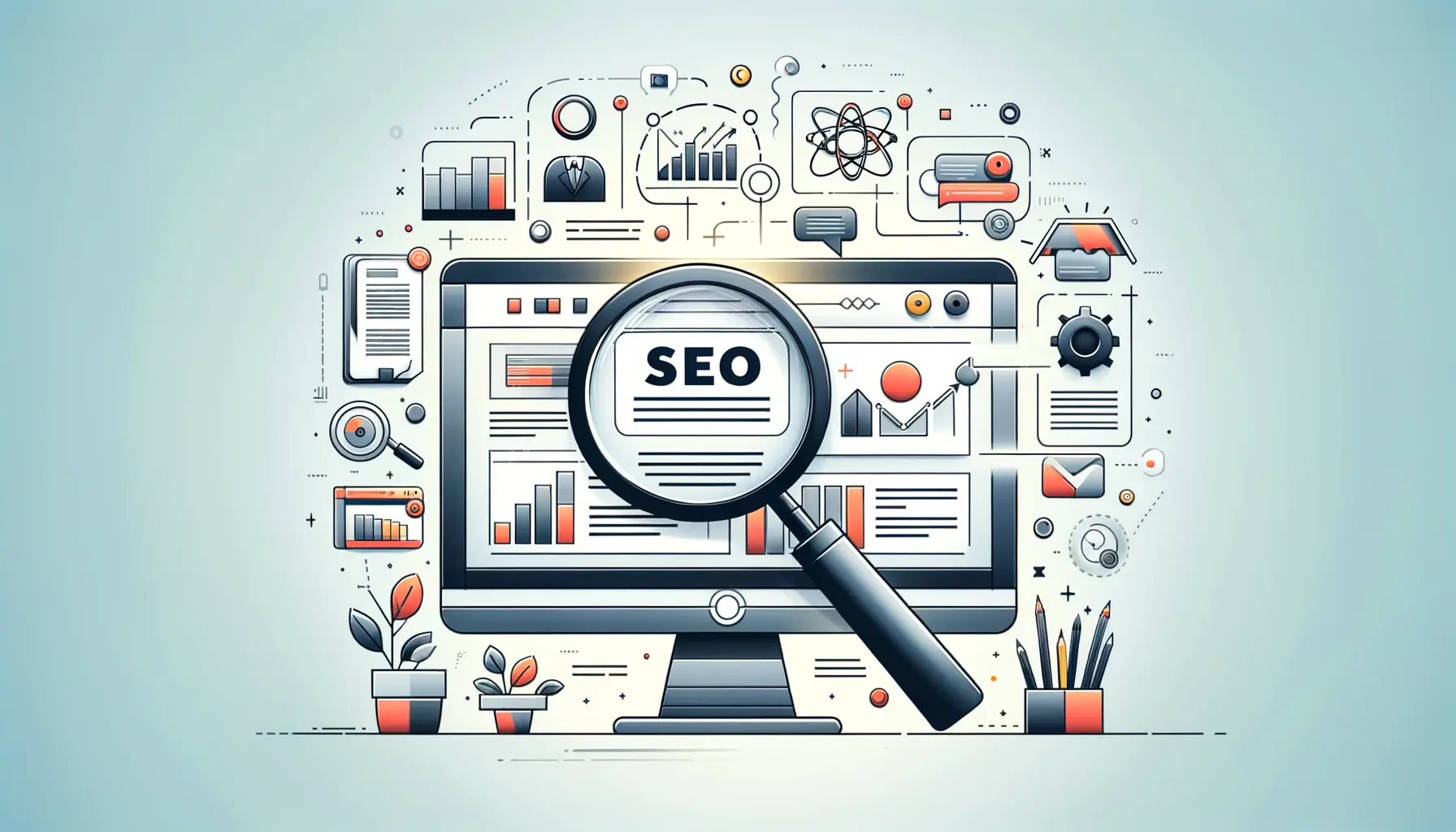Understanding the return on investment (ROI) for SEO campaigns within the Software as a Service (SaaS) industry is pivotal for marketers and business owners alike.
It’s not just about driving traffic; it’s about attracting the right kind of traffic that converts into paying customers, thereby fueling business growth.
This article delves into the intricacies of calculating ROI for SaaS SEO campaigns, offering valuable insights and methodologies to ensure your marketing efforts are both effective and profitable.
The landscape of SEO for SaaS companies is unique, requiring a nuanced approach to content creation, keyword strategy, and user engagement.
With the main keyword “ROI” at the heart of our discussion, we aim to explore how SaaS companies can optimize their SEO strategies to achieve maximum return.
By focusing on the specific challenges and opportunities inherent in the SaaS sector, this article will provide a comprehensive guide to measuring, understanding, and enhancing the ROI of your SEO campaigns.
- Understanding SEO ROI in the SaaS Industry
- Strategies for Maximizing SEO ROI
- Measuring and Analyzing SEO Performance
- Link Building Strategies for SaaS Companies
- Optimizing On-Page SEO for SaaS Websites
- Local SEO Strategies for Global SaaS Companies
- Future Trends in SaaS SEO
- Sealing the Deal on SaaS SEO Success
- ROI Calculation for SaaS SEO Campaigns: FAQs
Understanding SEO ROI in the SaaS Industry
The concept of ROI in the context of SaaS SEO campaigns is foundational for assessing the efficiency and effectiveness of your marketing strategies.
ROI calculation helps in quantifying the value generated from your SEO efforts relative to the investment made.
In the SaaS industry, where the sales cycle can be longer and more complex, understanding the nuances of SEO ROI is crucial for long-term success.
SEO for SaaS companies is not just about ranking high on search engines but about attracting high-quality leads that are more likely to convert into customers.
This involves a strategic blend of keyword research, content marketing, and technical SEO to align with the specific needs and search behaviors of your target audience.
The ultimate goal is to drive organic growth by enhancing visibility, improving user experience, and building credibility in the SaaS market.
Key Components of SEO ROI
To accurately calculate the ROI of your SaaS SEO campaigns, it’s essential to identify and measure key performance indicators (KPIs).
These include organic traffic, conversion rate, customer acquisition cost (CAC), customer lifetime value (LTV), and more.
By tracking these metrics, SaaS companies can gain insights into the effectiveness of their SEO strategies and make data-driven decisions to optimize their campaigns.
Another critical aspect of understanding SEO ROI is the time frame.
SEO is a long-term investment, and its true value is often realized over months or even years.
This is particularly relevant for SaaS companies, where building authority and trust online plays a significant role in attracting and retaining customers.
Therefore, setting realistic expectations and having patience is key to accurately assessing the ROI of your SEO efforts.
SEO ROI goes beyond mere traffic numbers; it’s about the quality of leads and the conversion rates that truly determine the success of your SaaS SEO campaigns.
Strategies for Maximizing SEO ROI
Maximizing the ROI of SEO campaigns in the SaaS sector involves a multifaceted approach, focusing on both on-page and off-page optimization strategies.
It’s about creating a synergy between various elements of SEO to drive organic growth and improve conversion rates.
Here, we explore several strategies that can significantly enhance the ROI of your SaaS SEO efforts.
Keyword Research and Optimization
At the core of any successful SEO strategy lies thorough keyword research.
For SaaS companies, this means identifying keywords that are not only relevant to their product offerings but also aligned with the user intent of their target audience.
This involves a careful analysis of:
- High-Volume Keywords: Keywords with a high search volume can drive significant traffic to your site, but they’re often highly competitive.
- Long-Tail Keywords: These are more specific and less competitive keywords that can attract highly targeted traffic, leading to better conversion rates.
- Buyer Intent Keywords: Keywords that indicate a readiness to purchase or sign up for a trial are crucial for converting visitors into customers.
Optimizing your website and content for these keywords ensures that you attract the right audience and improve your site’s visibility and ranking on search engines.
Content Marketing
Content is the backbone of any SEO strategy, especially in the SaaS industry where educating the market is often necessary.
A robust content marketing strategy should focus on:
- Creating Valuable Content: Produce content that addresses the pain points, challenges, and questions of your target audience. This includes blog posts, whitepapers, case studies, and videos.
- Content Diversification: Utilize various content formats to engage different segments of your audience and encourage them to spend more time on your site.
- SEO-Optimized Content: Ensure your content is optimized for both search engines and users by incorporating targeted keywords naturally and providing a great user experience.
Effective content marketing not only drives traffic but also establishes your brand as a thought leader in the SaaS space, building trust with your audience.
Technical SEO
Technical SEO is crucial for ensuring that search engines can crawl and index your website efficiently.
This includes:
- Improving Site Speed: A fast-loading website provides a better user experience and is favored by search engines.
- Mobile Optimization: With the increasing use of mobile devices, having a mobile-friendly website is essential for SEO.
- Secure Website (HTTPS): Security is a top priority for both users and search engines, making HTTPS a critical factor for SEO.
Addressing these technical aspects can significantly improve your site’s SEO performance, leading to higher rankings and better visibility.
Incorporating a comprehensive SEO strategy that includes keyword optimization, content marketing, and technical SEO improvements can significantly enhance the ROI of your SaaS SEO campaigns.
Measuring and Analyzing SEO Performance
To ensure the effectiveness of your SEO strategies and to maximize ROI, it’s crucial to measure and analyze your SEO performance regularly.
This involves tracking a variety of metrics that reflect the health and success of your SEO campaigns.
Understanding these metrics allows you to make informed decisions and adjust your strategies for better results.
Key SEO Metrics to Track
Several key metrics are essential for evaluating the success of your SEO efforts:
- Organic Traffic: The number of visitors coming to your site through organic search results. An increase in organic traffic indicates successful SEO.
- Conversion Rate: The percentage of visitors who take a desired action (e.g., sign up, purchase) on your site. High conversion rates suggest that your traffic is relevant and your site is effective at converting visitors.
- Bounce Rate: The percentage of visitors who leave your site after viewing only one page. A high bounce rate may indicate that your site’s content or user experience is lacking.
- Keyword Rankings: The position of your website’s pages in search engine results for specific keywords. Higher rankings can lead to more visibility and traffic.
By monitoring these metrics, you can gain insights into the performance of your SEO strategies and identify areas for improvement.
Tools for SEO Analysis
There are numerous tools available that can help you track and analyze your SEO performance.
Some of the most popular include:
- Google Analytics: Provides comprehensive data on website traffic, user behavior, and conversion metrics.
- Google Search Console: Offers insights into your site’s visibility on Google, including search queries, site errors, and indexing status.
- SEO Platforms: Tools like SEMrush, Ahrefs, and Moz offer a wide range of features for keyword research, competitor analysis, and SEO monitoring.
Utilizing these tools can provide you with a wealth of data to inform your SEO strategies and optimize your campaigns for maximum ROI.
Adjusting Strategies Based on Data
Data-driven decision-making is key to SEO success.
By analyzing your SEO performance data, you can identify what’s working and what’s not.
This may involve:
- Refining Keyword Strategy: Adjusting your focus to target more relevant or less competitive keywords.
- Enhancing Content Quality: Improving the relevance and value of your content to better meet the needs of your audience.
- Optimizing User Experience: Making changes to your site’s design or navigation to improve user engagement and reduce bounce rates.
Making informed adjustments to your SEO strategies based on performance data can significantly improve your campaigns’ effectiveness and ROI.
Regularly measuring and analyzing your SEO performance is essential for identifying opportunities for improvement and maximizing the ROI of your SaaS SEO campaigns.
Link Building Strategies for SaaS Companies
Link building is a critical component of SEO that can significantly impact your site’s authority and rankings in search engine results.
For SaaS companies, developing a robust link-building strategy is essential for enhancing visibility and driving organic growth.
This part of the article explores effective link-building techniques tailored for the SaaS industry.
Creating Shareable Content
One of the most effective ways to earn backlinks is by creating high-quality, shareable content.
This includes:
- Original Research and Data: Publishing unique insights, surveys, or industry reports that provide value to your audience can encourage other sites to link to your content.
- Comprehensive Guides: Detailed guides or tutorials that address specific challenges faced by your target audience are highly shareable and link-worthy.
- Infographics and Visual Content: Visual content is more likely to be shared and linked to, making infographics a powerful tool for link building.
By focusing on creating content that offers genuine value and is relevant to your audience, you can naturally attract high-quality backlinks to your site.
Guest Blogging
Guest blogging on reputable industry websites is another effective strategy for building links and increasing your brand’s visibility.
This involves:
- Identifying Relevant Blogs: Look for blogs or publications that are well-regarded in your industry and have an audience that would be interested in your SaaS product.
- Offering Valuable Content: Propose topics that are beneficial to the blog’s audience and align with your expertise. Ensure the content you provide is of high quality and informative.
- Including a Backlink: Most blogs will allow you to include a backlink to your site in your author bio or within the content, provided it adds value to the readers.
Guest blogging not only helps in acquiring backlinks but also positions your brand as an authority in your industry.
Building Relationships with Influencers
Engaging with influencers and thought leaders in your industry can lead to valuable backlink opportunities.
This strategy involves:
- Engaging on Social Media: Participate in discussions and share content from influencers in your industry to build relationships.
- Collaborating on Content: Propose collaborations on blog posts, webinars, or podcasts that can benefit both parties and lead to natural backlinking.
- Offering Testimonials: Providing testimonials for tools or services you use can result in a backlink from the provider’s website.
Building genuine relationships with influencers can significantly enhance your link-building efforts and improve your SEO performance.
Effective link building requires a strategic approach focused on creating value and building relationships, rather than merely seeking backlinks for SEO purposes.
Optimizing On-Page SEO for SaaS Websites
On-page SEO is crucial for improving the visibility and usability of your SaaS website.
It involves optimizing individual web pages to rank higher and earn more relevant traffic in search engines.
This part of the article focuses on key on-page SEO strategies that can significantly impact your site’s performance and user experience.
Title Tags and Meta Descriptions
Optimizing title tags and meta descriptions is essential for improving click-through rates (CTR) from search engine results pages (SERPs).
Effective strategies include:
- Incorporating Target Keywords: Ensure your primary keyword is included in the title tag and meta description to improve relevance and visibility.
- Creating Compelling Copy: Write engaging and concise copy that accurately describes the page content and encourages users to click.
- Using Unique Descriptions: Each page should have a unique title and description to avoid duplicate content issues and to better target different user intents.
These elements not only help search engines understand the content of your pages but also entice users to visit your site.
Header Tags and Content Structure
Proper use of header tags (H1, H2, H3, etc.) and organized content structure enhance readability and SEO.
Key considerations include:
- Using H1 Tags for Titles: Each page should have a single H1 tag that includes the main keyword and clearly indicates the page’s topic.
- Organizing Content with Subheadings: Use H2 and H3 tags to structure your content logically, making it easier for users to navigate and for search engines to understand the content hierarchy.
- Incorporating Keywords: Include relevant keywords in your headers, but ensure they fit naturally and are relevant to the section’s content.
A well-structured page with clear headings improves the user experience and helps search engines index your content more effectively.
Optimizing Images and Multimedia
Images and multimedia can enhance the user experience on your site but can also impact your site’s loading speed and SEO if not properly optimized.
Strategies for optimization include:
- Compressing Images: Use tools to reduce file sizes without compromising quality to improve page load times.
- Using Descriptive File Names: Choose file names that reflect the content of the image and include target keywords where appropriate.
- Implementing Alt Text: Alt text helps search engines understand the content of images and improves accessibility for users with visual impairments.
By optimizing images and multimedia content, you can improve both the speed and accessibility of your site, contributing to a better overall SEO performance.
On-page SEO is a foundational aspect of your overall SEO strategy, directly influencing your site’s visibility and user engagement.
Local SEO Strategies for Global SaaS Companies
For SaaS companies operating on a global scale, local SEO can seem counterintuitive.
However, optimizing for local search can significantly enhance visibility and attract targeted segments of your audience, even on a global stage.
This part of the article explores how SaaS businesses can leverage local SEO strategies to improve their overall SEO performance and reach.
Creating Location-Specific Pages
Developing dedicated pages for different geographic locations can help SaaS companies rank in local search results.
These strategies include:
- Localized Content: Tailor content to address the specific needs, challenges, and interests of users in different regions.
- Local Keywords: Incorporate local search terms and phrases relevant to your target markets to improve visibility in those areas.
- Contact Information: Include local contact details, such as phone numbers and addresses, to enhance credibility and user trust.
Location-specific pages not only improve your SEO but also provide a more personalized experience for your users.
Google My Business for SaaS
While Google My Business (GMB) is typically associated with physical businesses, SaaS companies can also benefit from creating a GMB profile.
This involves:
- Accurate Business Information: Ensure your business name, address (if applicable), phone number, and website are correctly listed.
- Category Selection: Choose categories that accurately describe your SaaS offerings to improve relevance in search results.
- Engaging with Reviews: Respond to user reviews to show engagement and improve your profile’s visibility and credibility.
A well-managed GMB profile can enhance your local SEO efforts, even for businesses without a physical storefront.
Local Link Building
Building links from local websites and directories can strengthen your local SEO.
Effective strategies include:
- Partnering with Local Businesses: Collaborate with local businesses and organizations to earn backlinks and increase your local presence.
- Local Directories: List your SaaS company in reputable local directories to improve visibility and backlink quality.
- Community Engagement: Participate in local events, sponsorships, or community projects to gain recognition and backlinks from local sources.
Local link building not only supports your SEO efforts but also helps establish your brand within local communities, potentially opening up new markets.
Even for globally operating SaaS companies, local SEO can play a crucial role in targeting specific markets and enhancing overall online visibility.
Future Trends in SaaS SEO
The landscape of SEO is constantly evolving, and staying ahead of the curve is crucial for SaaS companies looking to maintain and enhance their online visibility.
As we look towards the future, several trends are set to shape the strategies and approaches to SEO within the SaaS industry.
Understanding these trends can help you adapt your SEO efforts to remain competitive and effective.
Artificial Intelligence and SEO
Artificial intelligence (AI) is playing an increasingly significant role in how search engines understand and rank content.
For SaaS companies, this means:
- Content Relevance: AI algorithms prioritize content that is highly relevant and valuable to users. Ensuring your content closely matches user intent will become even more critical.
- User Experience: AI is used to evaluate the user experience on websites, including factors like page speed, mobile-friendliness, and interactivity. Optimizing for these factors will be essential.
- Personalization: AI enables more personalized search results based on user behavior and preferences. Tailoring your SEO strategies to cater to personalized experiences can improve your visibility and engagement.
Adapting to the AI-driven changes in search algorithms will be key to maintaining a strong SEO presence.
Voice Search Optimization
With the rise of digital assistants and smart speakers, voice search is becoming increasingly popular.
This trend impacts SaaS SEO in several ways:
- Natural Language Queries: Voice searches are typically more conversational and longer than text queries. Optimizing for natural language and question-based keywords is crucial.
- Local SEO: Many voice searches are local in nature. Even for global SaaS companies, optimizing for local search can capture this growing segment of users.
- Featured Snippets: Voice search often pulls answers from featured snippets. Optimizing your content to appear in these snippets can increase your visibility in voice search results.
Optimizing for voice search requires a focus on natural language processing and understanding user intent in spoken queries.
Video Content and SEO
Video content continues to grow in popularity and can significantly impact your SEO strategy.
For SaaS companies, leveraging video content involves:
- Video SEO: Optimizing video titles, descriptions, and tags with relevant keywords can improve visibility both on video platforms and in search engine results.
- Integrating Video with Written Content: Embedding videos in blog posts or articles can enhance user engagement and increase the time spent on your site.
- Creating Educational Content: Videos that explain complex SaaS features or provide tutorials can attract and retain users, driving both traffic and conversions.
Incorporating video content into your SEO strategy can enhance user engagement and provide an additional channel for visibility and traffic.
Staying informed about future trends in SEO and adapting your strategies accordingly is essential for the continued success of your SaaS company’s online presence.
Sealing the Deal on SaaS SEO Success
The journey through the intricacies of calculating and maximizing ROI for SaaS SEO campaigns is both enlightening and essential for businesses aiming to thrive in the digital landscape.
As we’ve navigated through the various strategies, from keyword optimization to the future trends shaping SEO, it’s clear that a dynamic and informed approach is key to achieving sustainable growth and profitability.
Integrating Insights for Maximum Impact
Understanding the ROI of your SaaS SEO efforts is not just about crunching numbers; it’s about integrating insights from various aspects of your digital marketing strategy to foster a holistic approach to growth.
This includes:
- Aligning your content marketing efforts with SEO goals to drive targeted traffic.
- Leveraging technical SEO to ensure your site’s architecture supports your content’s visibility.
- Embracing local SEO strategies, even for global companies, to capture niche markets.
- Staying ahead of the curve by adapting to emerging trends like AI, voice search, and video content.
Each of these elements plays a crucial role in not just attracting visitors but converting them into loyal customers, thereby enhancing the ROI of your SEO campaigns.
Future-Proofing Your SaaS SEO Strategy
As the digital world evolves, so too must our strategies for optimizing SaaS SEO campaigns.
The future of SEO is dynamic, with trends like artificial intelligence, voice search, and video content offering new challenges and opportunities.
To future-proof your SaaS SEO strategy, it’s essential to:
- Continuously monitor and adapt to changes in search engine algorithms and user behavior.
- Invest in quality content that addresses the specific needs and pain points of your target audience.
- Focus on building a strong technical foundation for your website, ensuring it’s fast, secure, and mobile-friendly.
- Engage with your community through social media, forums, and other platforms to build brand loyalty and authority.
By staying informed and agile, you can ensure that your SaaS company remains competitive and continues to grow its online presence effectively.
Conclusion
In conclusion, the calculation and optimization of ROI for SaaS SEO campaigns are critical components of a successful digital marketing strategy.
By understanding the nuances of SEO within the SaaS industry and implementing a comprehensive, data-driven approach, businesses can significantly enhance their online visibility, attract high-quality leads, and ultimately, achieve a higher return on investment.
As we look to the future, the ability to adapt and innovate will be paramount in navigating the ever-changing landscape of SEO, ensuring that your SaaS company not only survives but thrives in the digital age.
Want your website to top Google search rankings? Leave the SEO to our professional agency!
ROI Calculation for SaaS SEO Campaigns: FAQs
Explore commonly asked questions about maximizing ROI in SaaS SEO campaigns to enhance your strategy.
ROI in SaaS SEO campaigns measures the profit generated from SEO efforts compared to the investment made into those efforts.
Calculate SEO ROI by subtracting the SEO campaign cost from the generated revenue, then divide by the campaign cost and multiply by 100.
Key metrics include organic traffic, conversion rate, customer acquisition cost (CAC), and customer lifetime value (CLV).
Calculating ROI helps SaaS companies understand the effectiveness of SEO strategies and allocate resources more efficiently.
Yes, SEO ROI can be negative if the cost of SEO efforts exceeds the revenue generated from those efforts.
Seeing ROI from SEO can take several months to a year, as SEO is a long-term strategy.
Yes, every SaaS company should calculate SEO ROI to ensure their marketing efforts are cost-effective and goal-oriented.
SaaS companies can improve SEO ROI by optimizing content, enhancing user experience, and focusing on high-converting keywords.












